Our Agricultural Roots


The fertile soil of northwest Connecticut has given rise to a long, robust history of agriculture in the region. Native Americans cultivated the lush lands for thousands of years before early Colonial settlers arrived in the 18th century to stake out family farms.
These newcomers divided the land into subsistence farms where they kept livestock and grew corn for feed, rye, oats, barley and wheat to generate a little cash. A 5 1/2-mile swath of land south of the Colonial village initially served as common pasture for all kinds of grazing livestock.
At the height of farming in the 19th century, New Milford boasted more than 150 farms. After 1840, the dairy side of farming took off with the completion of the Housatonic Railroad. The town’s farmers now could ship milk, cream and butter to expanding urban markets, and by 1870, the western counties of Litchfield – where New Milford lies – and neighboring Fairfield produced more than two-thirds of Connecticut’s dairy products. Creameries popped up in different parts of town to serve local needs as well.
A second agro-industry took hold in New Milford around 1848, when sun-grown broadleaf tobacco became established as a seasonal cash crop. It was used for the outer wrapper leaves on cigars, which had grown in popularity in the U.S. after the Mexican War, and later for an inner layer called the binder. A new variety of tobacco, Havana Seed Leaf, was introduced in the 1880s and turned New Milford into “Tobacco Town,” the epicenter of a regional industry that stretched from northern Danbury through Kent and Cornwall.
New Milford alone produced as big a tobacco crop as any of the towns in the better-known Connecticut Valley. By 1900, a dozen warehouses were responsible for shipping 1 million pounds a year of the highly desired local tobacco leaf – about 8 percent of Connecticut’s total – to New York, Philadelphia, Germany and Holland. A few cigar makers also set up shop in town. One local dealer, J.S. Halpine, had as much as 60 acres of tobacco planted on multiple plots, six barns for curing the leaves, a five-story brick warehouse near the railroad tracks and another warehouse in East Hartford. Many of the large Victorian homes on Federal Road and on village streets like South Main Street and Aspetuck Avenue were built by farmers and dealers with the proceeds of good crop years.
The great American novelist Edna Ferber described the local landscape from this period in her 1931 novel American Beauty as “the rich green valleys of that spectacular part of Connecticut through which the Still River flows, and the storied Housatonic River … brilliant emerald in the summer sunshine, lay the tobacco farms of the Housatonic, a rich and heartening sight.” The waving leaves of the ripening plants may even have inspired the name of New Milford’s school sports teams – the Green Wave.
Ferber also wrote in her novel of another phenomenon: the immigrants from Poland, Sweden, Ireland and Germany who bought up and revived older farms left behind by the pioneering Yankee families who had moved in new directions. Many of the barns on the New Milford Barn Quilt Trail were built by these people, some on the foundations of older barns that had burned or blown down. “Gentleman farmers” also appeared, some of them buying up multiple smaller farms and building up large tracts. Such were George and Eliot Pratt, members of one of the families involved early on with the giant Standard Oil Co. George Pratt amassed more than 1,800 acres in New Milford and Bridgewater and made it his mission to preserve and promote agriculture in the area.
New Milford’s tobacco industry peaked around World War I but had virtually disappeared by the end of the 1930s, hurt by the growing popularity of cigarettes, bad crop years and the Great Depression. Many of the barns and former warehouses in town associated with it have survived and today support new uses. The number of dairy farms, increasingly mechanized, expensive to operate and ultimately unable to compete with vast Midwestern dairy farms, also began to decline steadily. They struggled after World War II and most gradually folded over the next 50 years as their land was sold for residential and commercial development.
In the early 21st century, the locally grown food movement that was sweeping the U.S. helped trigger a new determination on the part of New Milford’s residents – by now, almost 30,000 in number – to save our surviving family farms. This coincided with a growing influx of both young and semi-retired older individuals seeking land to farm.
By 2006, the New Milford Farmland & Forest Preservation Committee (www.newmilfordfarmlandpres.org) had been set up and charged with preserving working farmlands with funding support from the Connecticut Department of Agriculture’s Preservation of Development Rights (PDR) Program and our town. From 2006 to 2010, three family farms were saved and a fourth preserved by a private conservation buyer.
Along with these efforts, nonprofits like the 1,850-acre Nature Conservancy-Sunny Valley Preserve, headquartered in New Milford, have played a key role in preserving productive farmland. Sunny Valley hosts five farming operations in our town and neighboring Bridgewater, while the Northwest Connecticut Land Conservancy (formerly Weantinoge Heritage Land Trust) owns a 220-acre farm in New Milford that features an active mixed livestock operation and environmental education programming.
The number of specialized farming operations in New Milford is steadily expanding, offering more than 65 varieties of produce, poultry and livestock, Christmas trees and CSAs (Community Supported Agriculture). Together with an almost year-round farmers market, they demonstrate a vibrant revitalization and diversification of farming that New Milford welcomes and actively supports. After all, it was our town that in 2008 passed a right-to-farming ordinance, which was the first in the county and the second in Connecticut.
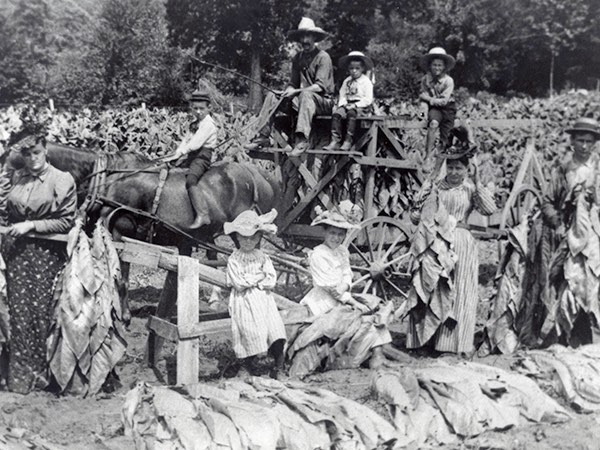
Three stages of harvesting tobacco at the turn of the 20th century are shown: The cut tobacco lies in the foreground; the woman standing at left skewers the stalks onto the laths; and the rest of the crowd loads the wagon. The picture is obviously posed, as harvesting tobacco is not something you do in your best bib and tucker. USED BY PERMISSION OF THE NEW MILFORD HISTORICAL SOCIETY
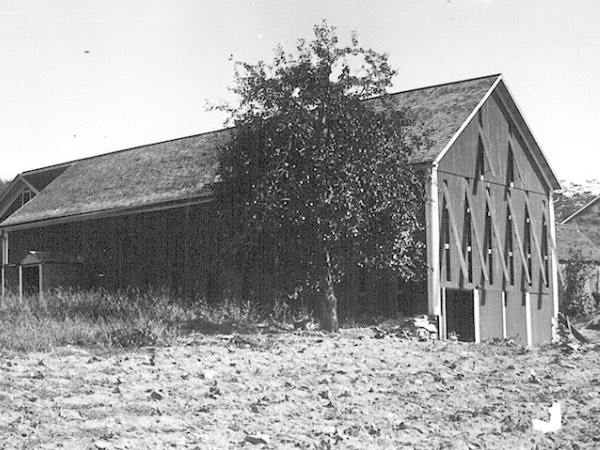
Tobacco barn with hinged siding lifted for drying and curing the leaves after harvest. COURTESY OF NEW MILFORD HISTORICAL SOCIETY
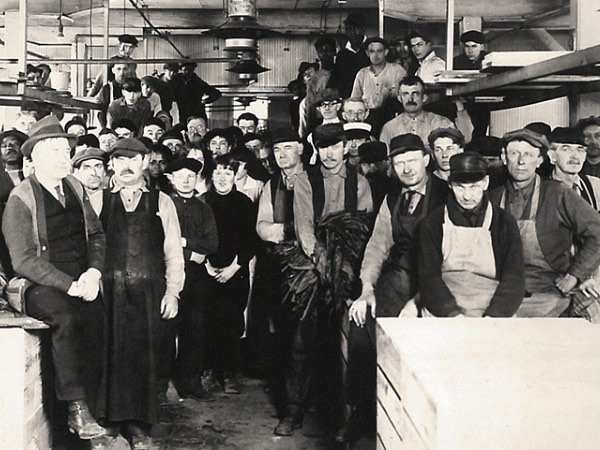
The tobacco industry in New Milford employed up to 500 people in the early 1900s, like these workers from the Hungerford Tobacco warehouse. At one time, a dozen warehouses in town were responsible for packing the highly prized, locally grown leaves for shipment to American cities and Europe.
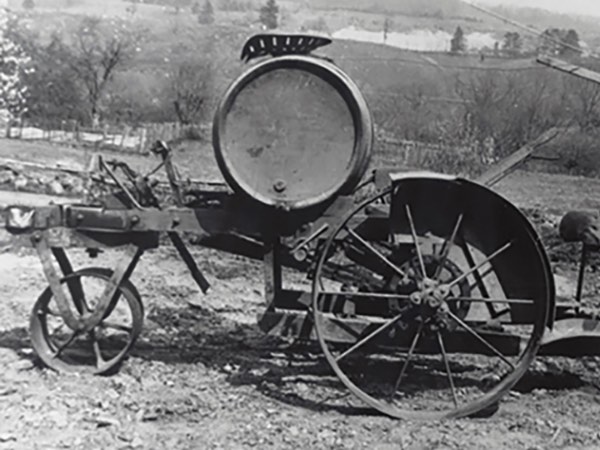
A deluxe horse-drawn tobacco planting machine, circa 1900. USED BY PERMISSION OF THE NEW MILFORD HISTORICAL SOCIETY
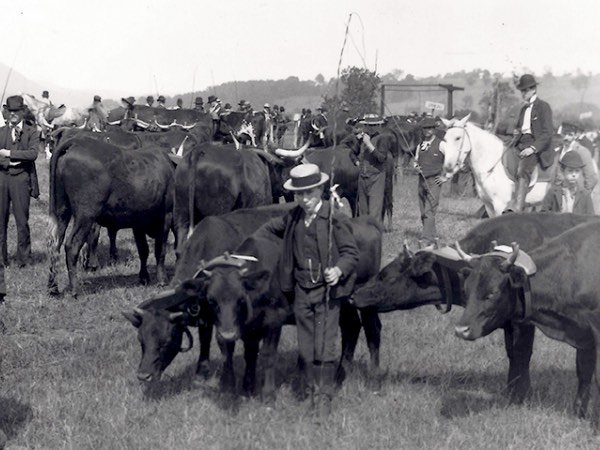
Ox teams and drivers of different sizes at the New Milford fairgrounds, 1895. USED BY PERMISSION OF THE NEW MILFORD HISTORICAL SOCIETY
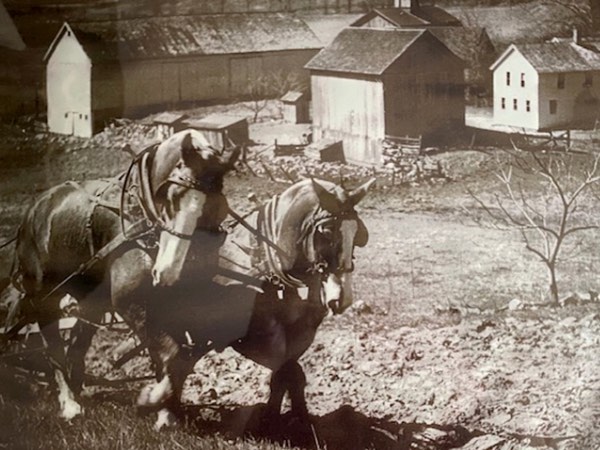
Horses at work at the former Halpine farm, circa 1940. PHOTO COURTESY OF RUTH AND JAMES COUILLARD
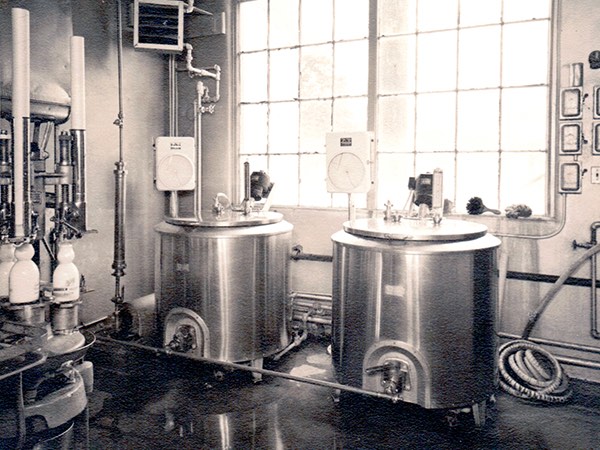
Pasteurizing and bottling milk, mid-1940s. USED BY PERMISSION OF THE NATURE CONSERVANCY-SUNNY VALLEY
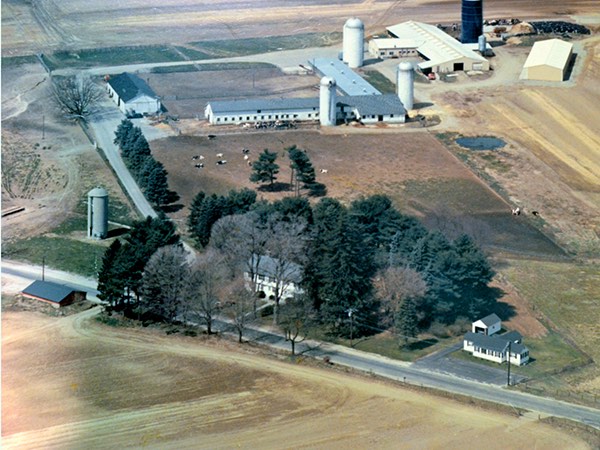
Sunny Valley Farm, 1973. Miling 200 cows and 150 head of replacements and dry cows. USED BY PERMISSION OF THE NATURE CONSERVANCY-SUNNY VALLEY
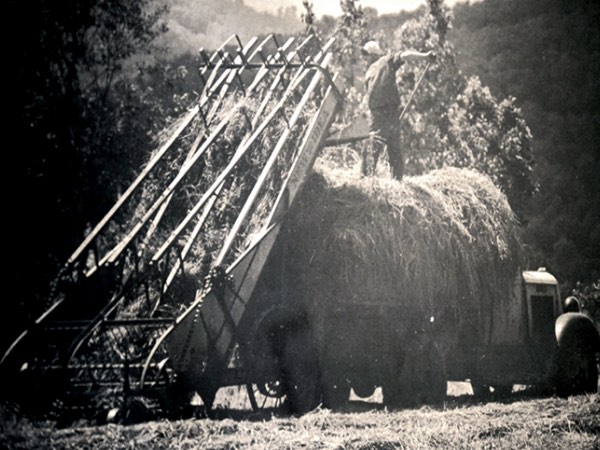
Picking up dried hay from a field, before the use of a baler, 1930s. USED BY PERMISSION OF THE NATURE CONSERVANCY-SUNNY VALLEY
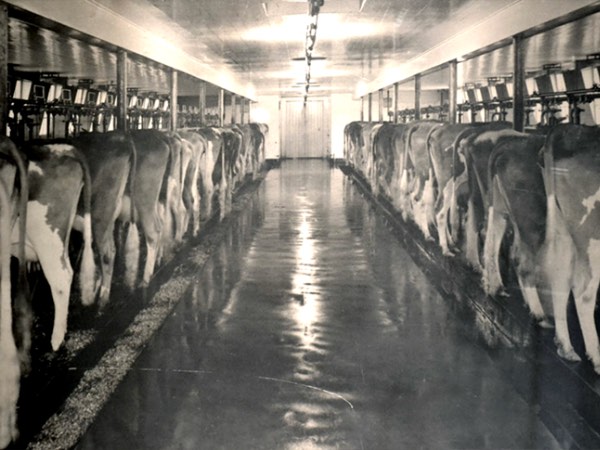
Guernsey cows, milking herd, 1930s. USED BY PERMISSION OF THE NATURE CONSERVANCY-SUNNY VALLEY
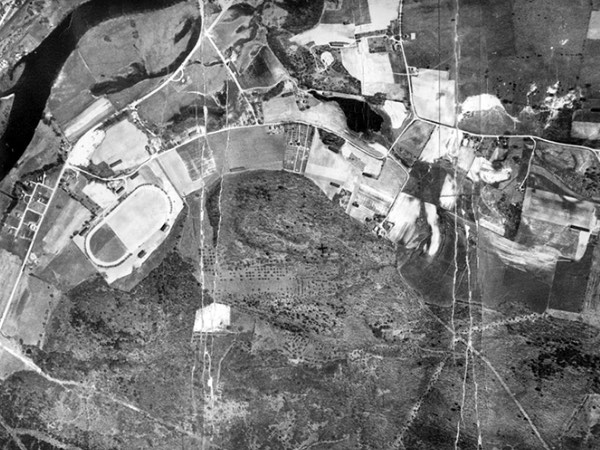
Fort Hill Farm from the air, 1936. USED BY PERMISSION OF THE NATURE CONSERVANCY-SUNNY VALLEY
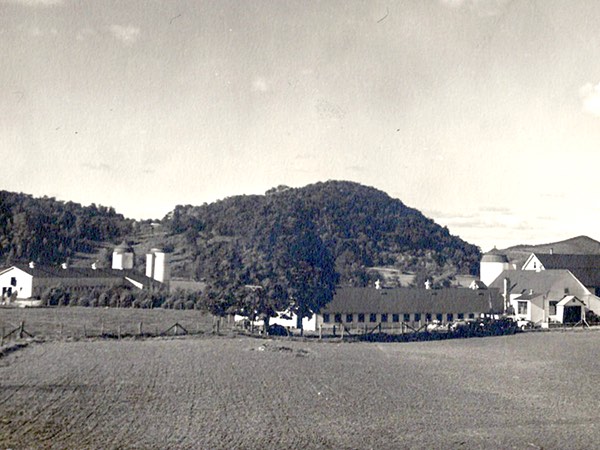
Sunny Valley Farm, 1950s. The building in the foreground housed a milking herd, and attached to the right side of it was a bottling plant. USED BY PERMISSION OF THE NATURE CONSERVANCY-SUNNY VALLEY
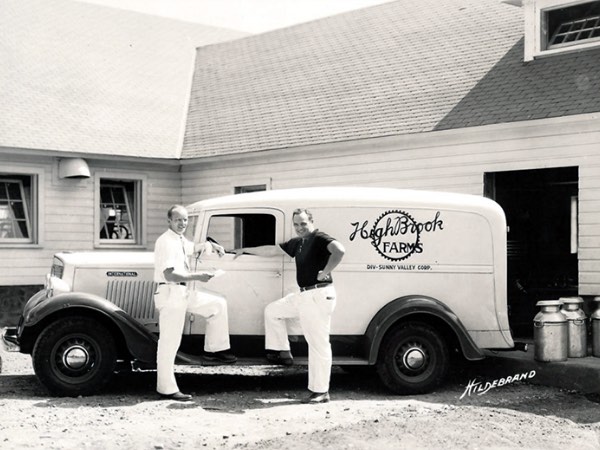
Milk delivery truck, mid-1950s. USED BY PERMISSION OF THE NATURE CONSERVANCY-SUNNY VALLEY
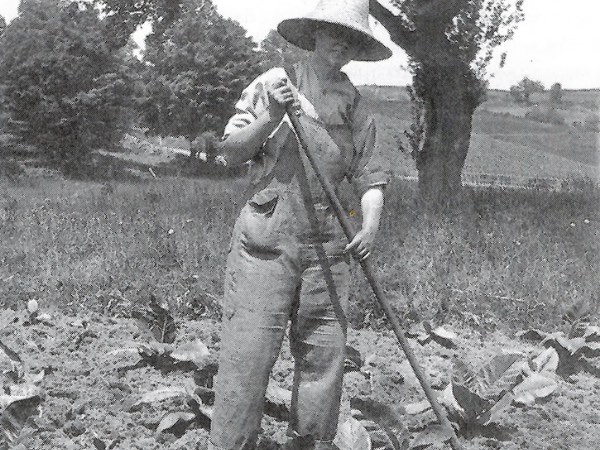
New Milford’s tobacco farmers eagerly participated in the Women’s Land Army program during World War I. Young women, many of them college students and teachers, volunteered for needed farm work. Forty women, mostly from Greater Hartford, spent the summer of 1918 “hoeing smokes” in New Milford tobacco fields. COURTESY OF VIRGINIA MCLOUGHLIN
Previous
Next
SOURCES
Halpine, Stuart, “Tobacco Growing in New Milford,” typed manuscript on file at the New Milford Historical Society, August 1994.
Manley, National Register of Historic Places nominations for New Milford tobacco warehouses: E.A. Wildman, Halpine, Schoverling.
Ninth, Tenth and Twelfth Census of the United States: Agriculture by United States Census Office, 1870, 1880 and 1900.
Orcutt, Samuel, “History of the Towns of New Milford and Bridgewater, Connecticut, 1703-1882” Press of the Case, Lockwood and Brainard Company, 1882.
Powell, H.A., “Tobacco-Growing Along the Housatonic,” Tobacco Leaf, Volume 42, from The New England Homestead, 1905, p. 43.
Roznoy, Cynthia, “Connecticut’s Tobacco Industry: Harold Barbour, Jack Delano, and the WPA,” The Journal of the Society for Industrial Archeology Vol. 34, No. 1/2, IA IN ART (2008), pp. 117-134 (18 pages).
Stack, Robin, Interview by Craig Riley of the New Milford Trust for Historic Preservation, October 7, 2000.
Sterling, Vincent, in “Two Centuries of New Milford, Connecticut: An Account of the Bi-centennial Celebration of the Founding of the Town Held June 15, 16, 17 and 18, 1907, With a Number of Historical Articles and Reminiscences.” New York: The Grafton Press, 1907, pp. 85-86.